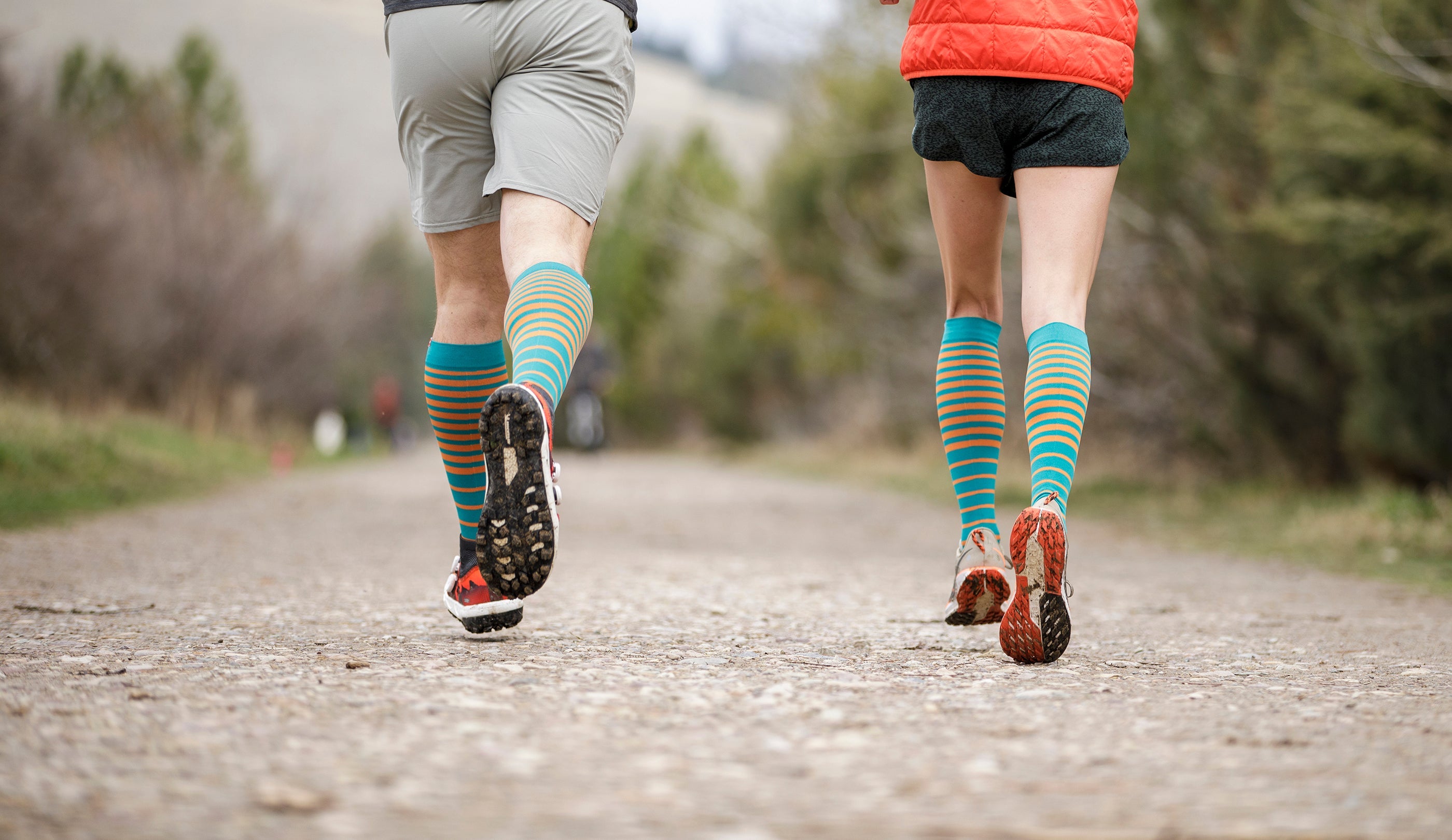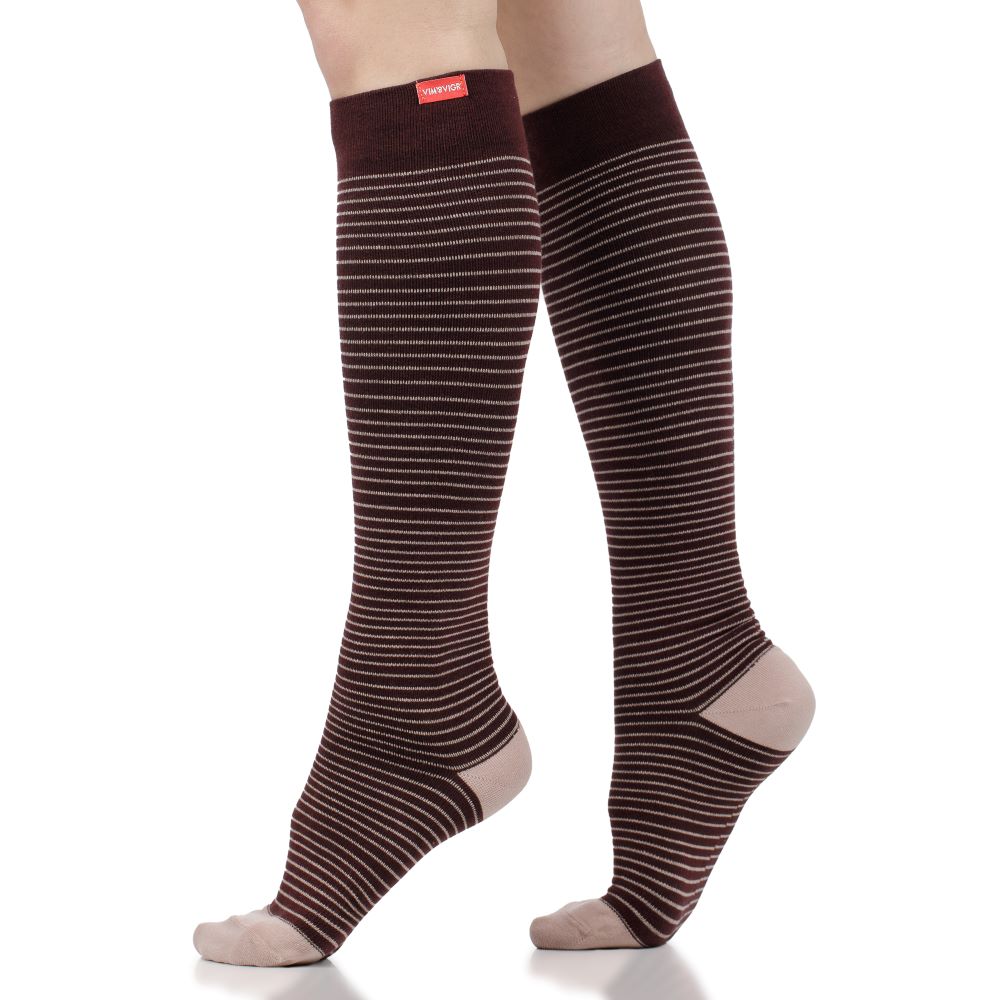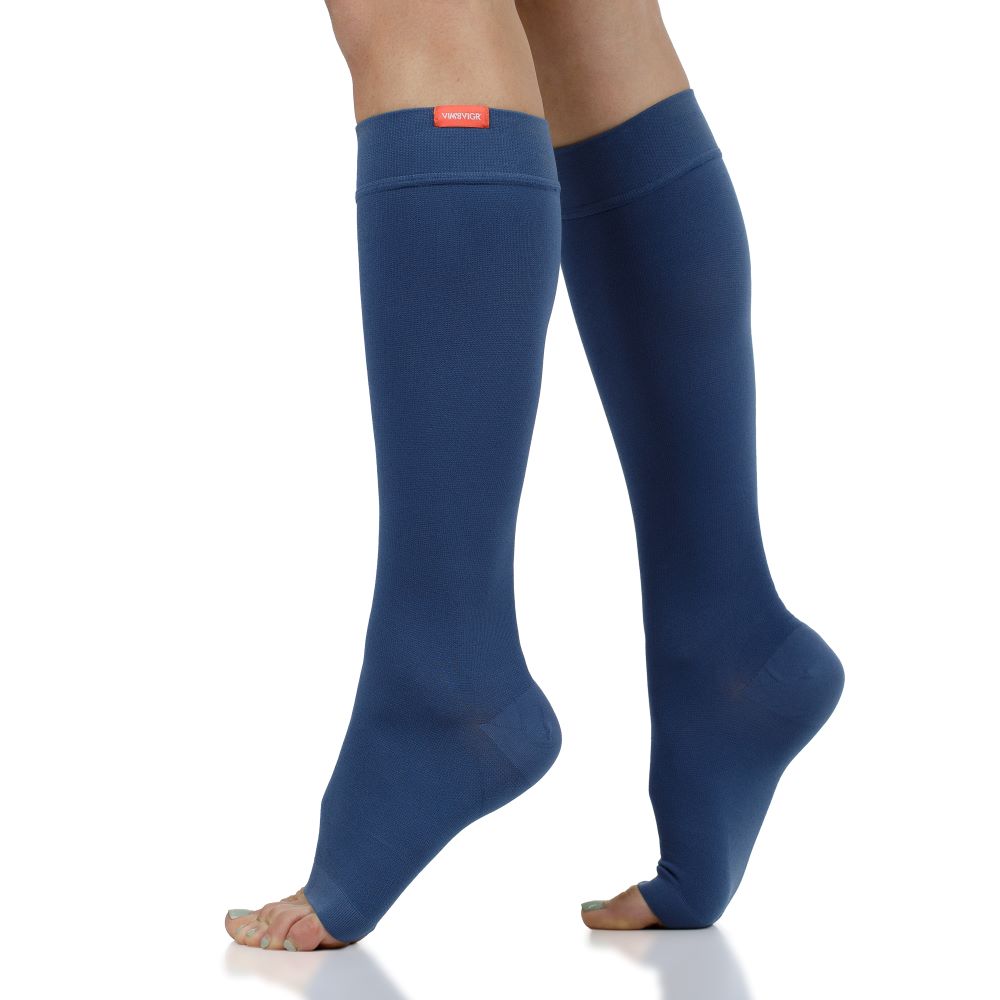Ease Diabetic Leg & Foot Pain: 9 Home Remedies That Work
People with diabetes often have discomfort and leg pain, which can be caused by peripheral circulation problems. For some diabetics, damage to the nerves, also called neuropathy, is common. Neuropathy can lead to pain, numbness, and weakness.
To ease the discomfort caused by diabetes-related circulatory problems or neuropathy, doctors can recommend a series of at-home solutions. These home remedies for diabetic foot and leg pain address various sources of discomfort. You may need to try several diabetic foot pain remedies before you find the one that works for you.
9 Diabetic Foot and Leg Pain Home Remedies
The common causes of diabetic foot and leg pain are nerve damage as well as edema or swelling, particularly in cases with poor peripheral circulation. Further, people with diabetes are at risk of developing problems with blood flow. According to one medical report, high blood sugar leads to high inflammation, changes in blood vessel structure, and poor kidney function. These issues are one way that neuropathy can develop in diabetics. Neuropathy in people with diabetes often leads to pain in the foot or leg.
Here are diabetic foot pain remedies to help you cope in the comfort of your own home.
1. Compression Therapy
Compression socks cannot address the root cause of diabetes, but they may alleviate pain and reduce swelling and inflammation in the lower legs, according to scientific studies. One clinical study found that compression therapy is safe in people with diabetes and peripheral neuropathy, and it can reduce edema and symptoms related to edema. Another scientific report found that compression therapy reduces leg pain.
This means that compression therapy can lower your chances of suffering from diabetic edema, which causes your leg to feel heavy and painful. It also means you might feel more energized and supported when you try to increase your movement levels (see our advice around exercising below).
Compression socks are therefore a convenient, easy to use tool to treat edema and prevent leg and foot pain in people with diabetes. Here at VIM & VIGR, we use graduated compression socks to maximize the benefit that you receive.
Graduated compression refers to a design where the socks are tighter at the lower end and gradually release pressure as they climb up the limb. This helps stimulate blood out from the legs towards the heart, helping those veins that may have become constricted by build-up of fluids. Graduated compression socks help prevent blood from pooling around the extremities and fluid build-up.
Finally, compression socks are a great way of preventing swelling and discomfort if you have a sedentary job (like sitting in front of a computer at our desks all day) or if you have a job that requires a lot of standing and being on your feet (like nurses, teachers, etc.).
Try out compression socks to relieve pain and swelling.

2. Regular Exercise
Studies have found that regular exercise is an effective at-home remedy for diabetic foot or leg pain. A 2017 report stated that exercise is a promising treatment for foot or leg pain in diabetics. This includes aerobic or weighted exercise. Additionally, exercise can improve vascular health (enhancing blood flow and reducing the risk of poor circulation) and reduce the likelihood of developing conditions like atherosclerosis and cardiovascular disease.
More importantly for diabetic patients, exercise can help regulate blood glucose levels, lower the accumulation of AGEs (advanced glycation end products, which have been linked with developing neuropathy), and prevent the development of type 2 diabetes and metabolic syndrome.
However, it is important that you start exercising gently and gradually, especially if you did not regularly exercise before you developed diabetic leg pain. For some people with diabetic leg pain, walking can feel difficult, and you might find yourself having a hard time maintaining balance if your legs and feet have been affected by neuropathy. In these cases, you should develop an exercise program with a medical professional and have safety measures prepared for when you work out.
3. Diet and Hydration
When managing diabetes, it’s essential to maintain a healthy diet to help reduce foot and leg pain. To improve diabetic foot or leg pain, you should prioritize eating a balanced diet without processed foods and with plenty of healthy vegetables and fruits. One study found that a low-fat, plant-based diet reduced pain in diabetics with neuropathy. You should also ensure you stay well hydrated, as good levels of hydration promote healthy blood flow and prevent swelling and discomfort in the lower legs.
Certain supplements and herbal remedies may also help reduce pain and inflammation from diabetes. For example, a scientific report found that turmeric can decrease blood sugar levels and inflammation while also reducing other diabetic symptoms. Be sure to consult a registered dietician to ensure you are receiving the nutrition that you need
Increase ankle stability and boost peripheral circulation in compression socks.

4. Foot and Leg Massage
When you suffer from swollen, sore legs, or “pins and needles” sensations, a foot massage might be a beneficial at-home remedy for diabetic foot pain. A massage can boost localized circulation while also helping reduce swelling and fluid build-up. If you suffer from diabetic leg pain, massage could reduce your pain and also improve symptoms related to edema, according to a classic scientific report. Foot and leg massages also help release tension and restore tired muscles after exercising.
5. Warm Baths and Heat Therapy
Contrast therapy, where you alternate between hot and cold stimuli (like alternating between a hot and cold bath), has become very popular for those who suffer from diabetic leg pain. A scientific review found that bathing in hot water as well as contrast therapy can improve blood circulation while reducing pain and increasing range of motion. For those suffering from diabetic neuropathy or swollen legs, bathing can be extremely relaxing and restoring.
Another form of heat therapy for foot and leg pain is the application of hot patches and compresses. These can reduce pain locally while improving circulation.
6. Stop Smoking
This is not necessarily a diabetic foot pain home remedy, but more of a lifestyle change. Quitting smoking is essential if you’ve been diagnosed with diabetes. Tobacco can decrease blood flow, which increases the likelihood of developing foot swelling and foot or leg pain. Tobacco use has been reported to increase the risk of developing nerve damage in people with diabetes. Reach out to your doctor to see how to stop smoking gradually and sustainably.
7. Stress Management & Relaxation Techniques
We should not underestimate the role of stress in producing pain and discomfort. High stress is generally accepted by the medical community as a cause of increased blood sugar levels, which will particularly affect diabetics. Moreover, people who suffer from stress can resort to unhealthy coping behaviors such as “stress eating” unhealthy high-sugar foods, avoiding exercise, or drinking alcohol and smoking tobacco.
To help manage your stress, start a hobby that allows your mind to rest and restore. Simple activities like playing with Lego, solving jigsaw puzzles, or coloring to help take your mind off stressful preoccupations without making a concerted effort like when you start meditation.
Furthermore, slow-breathing practices can reduce stress. Simply use an app to help pace your breathing. One scientific report stated that 5-6 breaths per minute can effectively reduce stress. Practices like yoga can also help, as it keeps your body moving while incorporating slow-breathing practices. And, of course, unwinding by walking in the fresh air, reading an enjoyable book, or listening to music are all great ideas for reducing stress.
Relax in a comfortable pair of compression socks to boost peripheral circulation.

8. Ice and Cold Therapy
The other side of heat therapy, immersing the legs in cold water (also called cold plunging) or using ice on feet, ankles and lower legs can also help reduce inflammation and pain. Whereas a hot therapy can improve circulation, cold therapy is a safe and effective at home remedy for reducing diabetic pain in your legs and feet. You can also apply cold compresses and ice packs to sore areas. If you are interested in cold plunging, consult your doctor. There are health risks associated with cold plunging in people with certain medical conditions.
9. Regulate Your Blood Sugar
Hyperglycemia is a crucial feature of diabetic neuropathy, which means that regulating blood sugar levels can help reduce pain caused by it. High blood sugar accelerates the production of advanced glycation end products (AGEs), which are linked with the development of diabetic neuropathy, according to this study. Diabetics who manage to regulate blood sugar levels, therefore, can prevent the nerve damage and pain that comes with it.
Some supplements may help with regulating blood sugar. The Mayo Clinic reports that Vitamin B-12, Alpha-lipoic acid, and acetyl-L-carnitine may improve your glucose regulation.
What Causes Diabetic Foot and Leg Pain?
People who suffer from diabetes and unregulated blood sugar often develop diabetic neuropathy because of nerve damage. This causes diabetic foot and leg cramps, discomfort, and pain. Diabetic neuropathy is a result of long-term high blood sugar levels.
Symptoms of diabetic foot and leg pain also include numbness, tingling, and burning sensations.
When to See Your Doctor
While these at-home remedies can help with pain management to some extent, those with advanced nerve damage from diabetes will also need to discuss their condition with a doctor.
Advanced diabetic neuropathy will require medication for pain management. You can take some over-the-counter remedies like ibuprofen. Your doctor can also prescribe treatments that are FDA approved.
It’s important to check in with your doctor urgently if you are diagnosed as diabetic and experience the following symptoms:
- Frequent cramps or shooting pains
- Redness or swelling that does not subside
- Pain or numbness that doesn’t go away
- Tingling in the feet, especially consistent / long term
Finally, diabetes raises your risk of developing peripheral artery disease (PAD) - which causes blocked blood vessels in your legs. It can increase the risk of having a heart attack or stroke and become very serious. You should discuss this risk with your doctor.
References
Yachmaneni, A., Jr, Jajoo, S., Mahakalkar, C., Kshirsagar, S., & Dhole, S. (2023). A Comprehensive Review of the Vascular Consequences of Diabetes in the Lower Extremities: Current Approaches to Management and Evaluation of Clinical Outcomes. Cureus, 15(10), e47525. Read it here.
Wu, S. C., Crews, R. T., Skratsky, M., Overstreet, J., Yalla, S. V., Winder, M., Ortiz, J., & Andersen, C. A. (2017). Control of lower extremity edema in patients with diabetes: Double blind randomized controlled trial assessing the efficacy of mild compression diabetic socks. Diabetes research and clinical practice, 127, 35–43. Read it here.
Shi, C., Dumville, J. C., Cullum, N., Connaughton, E., & Norman, G. (2021). Compression bandages or stockings versus no compression for treating venous leg ulcers. The Cochrane database of systematic reviews, 7(7), CD013397. Read it here.
Kluding, P. M., Bareiss, S. K., Hastings, M., Marcus, R. L., Sinacore, D. R., & Mueller, M. J. (2017). Physical Training and Activity in People With Diabetic Peripheral Neuropathy: Paradigm Shift. Physical therapy, 97(1), 31–43. Read it here.
Bunner, A. E., Wells, C. L., Gonzales, J., Agarwal, U., Bayat, E., & Barnard, N. D. (2015). A dietary intervention for chronic diabetic neuropathy pain: a randomized controlled pilot study. Nutrition & diabetes, 5(5), e158. Read it here.
Clair, C., Cohen, M. J., Eichler, F., Selby, K. J., & Rigotti, N. A. (2015). The Effect of Cigarette Smoking on Diabetic Peripheral Neuropathy: A Systematic Review and Meta-Analysis. Journal of general internal medicine, 30(8), 1193–1203. Read it here.
Fincham, G. W., Strauss, C., Montero-Marin, J., & Cavanagh, K. (2023). Effect of breathwork on stress and mental health: A meta-analysis of randomised-controlled trials. Scientific reports, 13(1), 432. Read it here.


















Leave a comment